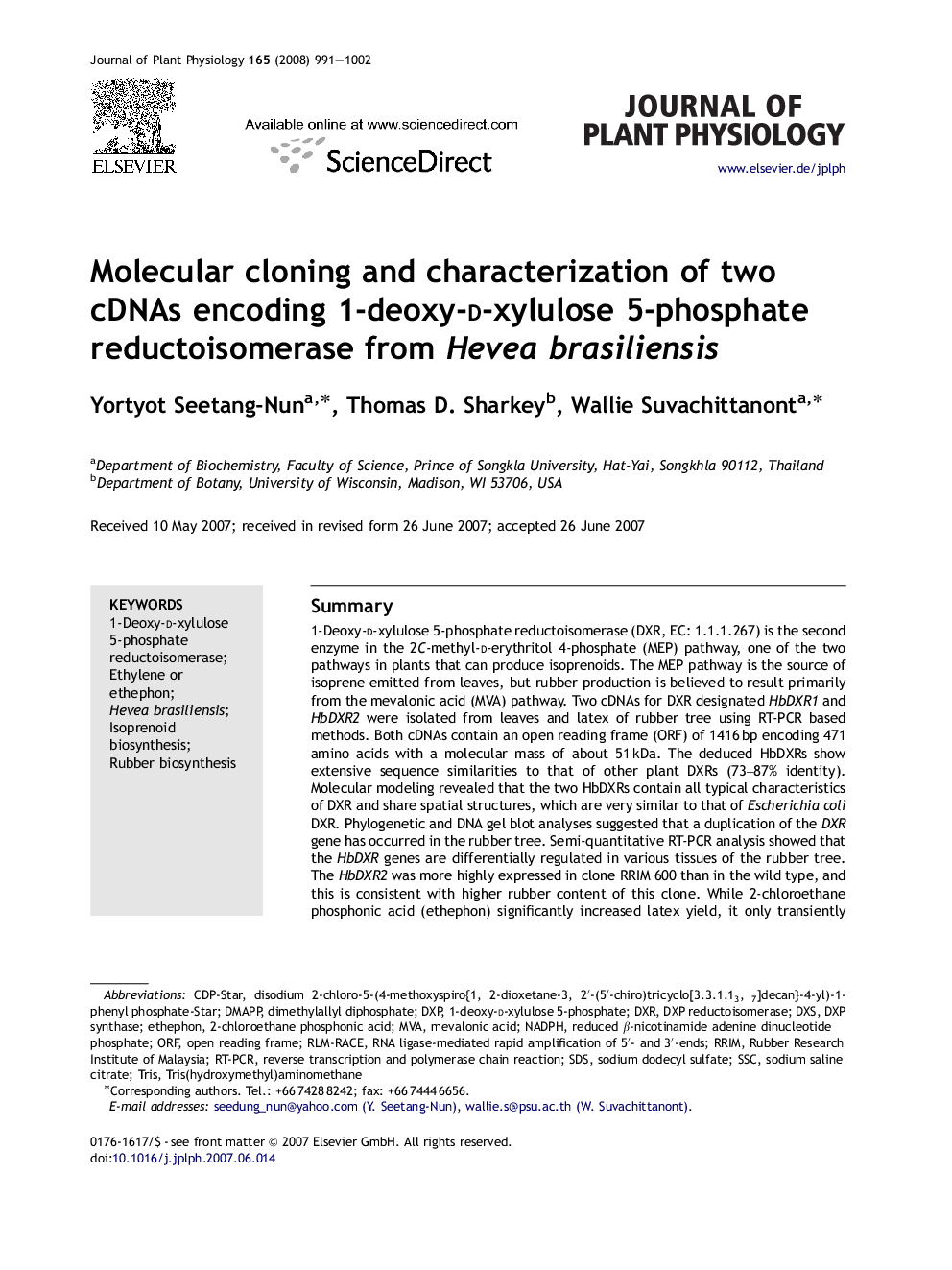| کد مقاله | کد نشریه | سال انتشار | مقاله انگلیسی | نسخه تمام متن |
|---|---|---|---|---|
| 2057984 | 1076141 | 2008 | 12 صفحه PDF | دانلود رایگان |

Summary1-Deoxy-d-xylulose 5-phosphate reductoisomerase (DXR, EC: 1.1.1.267) is the second enzyme in the 2C-methyl-d-erythritol 4-phosphate (MEP) pathway, one of the two pathways in plants that can produce isoprenoids. The MEP pathway is the source of isoprene emitted from leaves, but rubber production is believed to result primarily from the mevalonic acid (MVA) pathway. Two cDNAs for DXR designated HbDXR1 and HbDXR2 were isolated from leaves and latex of rubber tree using RT-PCR based methods. Both cDNAs contain an open reading frame (ORF) of 1416 bp encoding 471 amino acids with a molecular mass of about 51 kDa. The deduced HbDXRs show extensive sequence similarities to that of other plant DXRs (73–87% identity). Molecular modeling revealed that the two HbDXRs contain all typical characteristics of DXR and share spatial structures, which are very similar to that of Escherichia coli DXR. Phylogenetic and DNA gel blot analyses suggested that a duplication of the DXR gene has occurred in the rubber tree. Semi-quantitative RT-PCR analysis showed that the HbDXR genes are differentially regulated in various tissues of the rubber tree. The HbDXR2 was more highly expressed in clone RRIM 600 than in the wild type, and this is consistent with higher rubber content of this clone. While 2-chloroethane phosphonic acid (ethephon) significantly increased latex yield, it only transiently induced the HbDXR2 gene. The expression of HbDXR2 in the latex suggests its important role in isoprenoid biosynthesis by substrate molecules, indicating that the MEP pathway may have some indirect roles in the biosynthesis of rubber.
Journal: Journal of Plant Physiology - Volume 165, Issue 9, 16 June 2008, Pages 991–1002